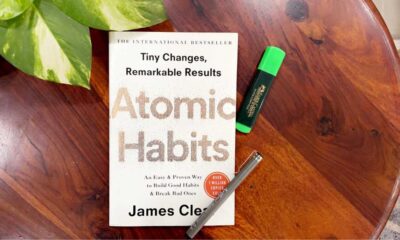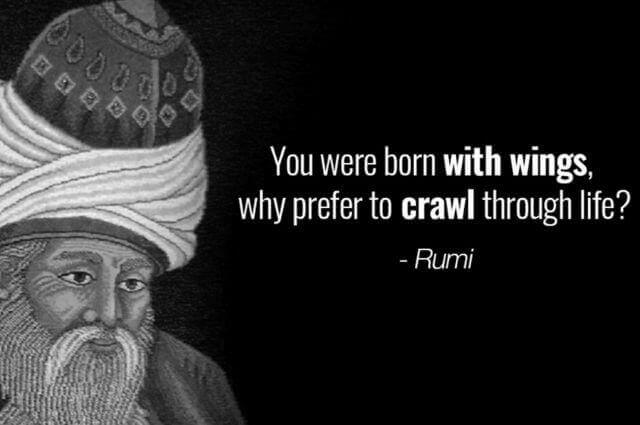Lifestyle
A Fresh Take On Journaling – How To Start Narrative Journaling

Every one of us has a story. There are the obvious ones punctuated by exclamation points: a heartache, a recovery, a triumph, an unexpected twist of fate.
But what about the less glaring, the experiences and subsequent lessons that leave three little obscure dots in its wake?
Stories that, unbeknownst to us, routinely shape who we are and how we behave.
It is well known that writing down your thoughts and feelings in a journal has undeniable benefits — from reducing stress, strengthening emotional functioning, and sharpening memory.
Undoubtedly, a journal helps us focus and organize daily events. But I’m suggesting a new approach to journaling.
A method that goes beyond recounting daily happenings and how we feel about them. I am suggesting you tell the story …
“Narrative Journaling” is the process of crafting memories and experiences into interesting stories. The difference is the protagonist is you!
While journaling in the traditional sense relays important information for personal growth and reflection, adding elements of storytelling (plot, character arc, dialogue, humor, conflict/drama, setting, theme, point of view, figurative language, etc) increases its value twofold by adding creative expression and emotional connection. The result is not only compelling, but quite possibly, life changing.
How I Found Narrative Journaling…Or How It Found Me
I had no hobbies. I did not take to things like photography, or puzzles, or legos, or cooking, or baking, or designing, or crafting. I did not have a thing. I wanted to have a thing.
Something I could hashtag (even though I still don’t really know what that means). Or have some cute saying symbolic of my personality to show off on a t-shirt, like “But first, coffee” (not much of a coffee consumer). I was missing a thing — some idea or activity representative of me.
Somewhere along my search for a thing, I was reminded that the past leaves clues.
So when I thought about my childhood and the things that made me lose touch with time, I thought of writing.
The beauty of a blank page that could breathe stories from nothing into something. Where you move words around and fit them together to create an image, like pieces of a puzzle.
So, in 2017, when I longed to make something my “thing,” something to uncover just a little more of me, I turned back to writing.
I began to write vignettes — short paragraphs that captured my young children doing the mundane: the way my daughter lovingly strapped her dolls in a stroller; how she palmed a piece of cake with two hands; how she cradled her Lamby under her chin after a cry. My son, learning to crawl along the kitchen floor and dragging one limp leg behind him; chugging his choo choo trains for hours on end; oscillating alligator legs down his first water slide.
Little nuggets to remember moments I feared I’d forget. I wanted to trap them in time. Like a photograph. (Also, no eye for photography.) The further the memory, the more I wanted to live inside it, yet the harder it was to reach.
What do I do with these little written memories? I thought. Where does it go next? Surely, people could relate? What does it all mean? Can I move it past being a “thing” and into something more? And if so, the paralyzing, HOW?
I turned a couple vignettes into short stories, using moments that sat in my memory for whatever wacky reason.
I twisted them and looped them with what I could still see and what I imagined could have been. I bundled up those bits of life and did the unthinkable — I shared them!
I cracked open a creaky door for others to peer in — baring fears, regrets, questions, hopes, dreams, failures. Shedding layers not only to understand myself better, but in hopes that it sparks a glimpse of a story in you.
After years of this practice, I find rich fulfillment in the art and in the voice filling the white space. It is a restorative process of moving the seemingly meaningless into significant events with underlying messages.
Narrative journaling, at its core, is reflection; the recalling of details in moments — of any size or distance — and exploring how certain particulars might be significant.
Meanwhile, the use of narrative elements brings the story to life. A thorough reimagining of the event? What did I see? Hear? Taste? Smell? Feel? And even what I didn’t.
The practice of narrative journaling encourages you to not only think about what you think about, but also why you think that way.
It is an exploration of our metacognition – an awareness and understanding of our own thoughts – to better understand ourselves so we can grow.
If you are willing to examine and study your own stories (whether from five days ago or five years ago), you will be surprised by what you uncover, both personally and creatively. Because you never know what might be revealed until you start poking around.
Centuries of highly successful people have been known to keep a journal. From Albert Einstein, to Warren Buffet, to Oprah Winfrey.
Whatever the method of writing, it is safe to say that writing your story remains an integral part of exceptional achievement and transformation.
10 Tips to Start Narrative Journaling:
- Don’t judge yourself or your writing. Focus on telling the story.
- Choose a memory you want to explore. No matter size or distance.
- Be observant. Zoom in on a particular scene from the experience, noting what is present and even what isn’t. Find a photo or object from the experience for inspiration.
- Engage your senses from the experience (see, taste, touch, hear, smell).
- Flesh out everything you can. No detail is wasted — details morph into larger stories.
- Listen to the inner voice as though letting someone into your secret thought life.
- Memories are often inaccurate. Invent details that might have been to fill in gaps.
- Struggling to get started? Look at an event from the perspective of another person involved and tell the story through their point of view.
- Stuck? Begin with the phrase “I remember…”
- Have fun!
A Few Prompts:
- Describe a thrilling thing you have done.
- Share a memory that changed your perspective on something.
- Write a letter to a place you miss.
- Reflect on a childhood memory.
- Describe a crazy thing you’ve done.
- Tell about a possession of significance.
Your story matters. Remember to have fun and forget what you learned about the rules of writing in school.
There is only one rule of writing: be interesting. If it matters to you, chances are, it matters to someone else.
-

 Books3 months ago
Books3 months ago10 Life-Changing Lessons from ‘Atomic Habits’ by James Clear
-

 Growth3 months ago
Growth3 months agoThe Hero’s Journey: Transformative Questions for Success?
-

 Growth2 months ago
Growth2 months agoSimple Ways To Boost Your Confidence In A Day
-

 Growth3 months ago
Growth3 months agoHow Cognitive Biases Affect Our Decision-Making Process
-

 Travel3 months ago
Travel3 months agoMindset Peaks: The Mental Benefits of Trekking Explained
-

 Mental Health3 months ago
Mental Health3 months agoWhat Are the Mental Health Problems Among Adolescents?
-

 Quotes3 months ago
Quotes3 months ago40 Best Swami Vivekananda Quotes On Motivation, Love and Life
-

 Mental Health3 months ago
Mental Health3 months agoWhat Are the Most Common Mental Health Issues in Young Adults?
































